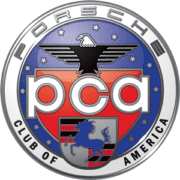Hitting Apexes… May 2015
In March I covered Understeer so guess what I am going to cover this month? How about Oversteer? Great guess – you get to move to the black run group. Just kidding.
To refresh, understeer and oversteer are vehicle dynamic terms used to describe the sensitivity of a vehicle to steering. Simply put, oversteer (or loose in racing terms) is what occurs when a car turns (steers) by more than (over) the amount commanded by the driver. Conversely, understeer is what occurs when a car steers less than (under) the amount commanded by the driver.
According to the SAE (Society of Automotive Engineers), automotive engineers define understeer and oversteer based on changes in steering angle associated with changes in lateral acceleration over a sequence of steady-state circular turning tests (think skid pad). We often use the terminology more generally when we talk about how a car performs at an Autocross, at a DE event or at our Car Control Clinic to describe vehicle response to steering in all kinds of maneuvers.
When a car is more prone to oversteer and it is taken to the grip limit of the tires (great thing to try at our CCC or an AutoX), it becomes dynamically unstable with a tendency to spin out. Although a vehicle that has a tendency to oversteer is generally unstable, a skilled driver can maintain control past the point of instability with counter-steering, and/or correct use of the throttle or even brakes. Not that we promote this at DE or even at an AutoX, this can be referred to as drifting. However, at some limit in lateral acceleration, it is not physically possible for even the most skilled driver to maintain control and spin out will occur.
So what causes oversteer? In rear wheel drive cars, oversteer is generally caused by a lack of traction at the rear, coupled by a turn of the front wheels or uneven application of power to the rear wheels. Many things can cause oversteer, but slippery conditions, jerky steering wheel movements and inappropriate braking (in the middle of an Apex) are usually the root cause.
Mind you, even front wheel drive cars can oversteer. Example? When on a track and the driver feels they have the corners down pretty well and start building up their speed, but due to the increased speed they brake past a braking marker. No problem, says the driver “it’s a front wheel drive car” and they just brake harder and take a later apex. They are hard on the brakes as they turn in; suddenly, their world is a blur and feel like an astronaut in lateral G training. A rear wheel drive car would tend to understeer (push) in this case.
Anyway, now that you know about Mr. Oversteer, what do you do when he pays you a visit? As with understeer, slightly less of what you are doing. Release some pressure from the brake or gas pedal whichever your foot is on. Now, steer the wheel in the direction that the back end is coming around. Feel that? That is the car regaining traction. Congratulations! You have just caught your first slide.
For practice on catching slides, go to a deserted dirt or snow packed parking lot. In a straight line, accelerate to 20mph or so. Now, turn the wheel hard left or hard right. What happens? You plow straight: this is understeer. Next, do the same thing, but turn the wheel and pull up the handbrake at the same time – this, my friends is oversteer. Practice catching slides until you get proficient at it, and you wiill learn to love oversteer too.
The historical discussion about oversteer and 911’s tended to dwell on the older 911’s ability to have “snap oversteer”. This is generally caused by an abrupt lift off the throttle while driving or mostly accelerating through a turn. This oversteer is caused by a big weight transfer to the front. Hence the advice “never lift in the corners”. While the older 911’s were known for this and their suspension has come a very long way, all cars are susceptible to sudden oversteer via an abrupt lift in a corner. Just some more than others.
So in this case, recovering is done with the throttle. Without throttle, the car is going to dive over its front wheels and reduce the ability of the sliding rear wheels to resist the yaw. Too much throttle is going to increase the physical forces (either longitudinal or lateral) working on the car and on the sliding wheels. So you need to apply just enough throttle for the car to maintain a constant speed in which it is not decelerating or accelerating and applying the correct amount of counter steering. In an upcoming DE, we will cover this in the classroom and teach you all about CPR (Correct, Pause, Recover).
So to summarize the main causes of oOversteer:
1. Entering the corner too fast
It is not the quickest way to take a corner and leads to increased risk of oversteer. Make sure your entry speed is slow enough to maintain grip, you can build up speed as you gain experience.
2. Accelerating into the corner, too early or too aggressively
If you manage to break traction at the back when applying throttle, you need to be less aggressive. The power is not transferring to the road and you need to gently ease off the gas and you should regain adhesion at the rear wheels.
3. Lifting off the throttle mid-corner
If you are on the power mid-corner and close to the limit, do not lift off the throttle. The resulting forward weight transfer can upset the balance of the car and allow the rear wheels to break loose. In a front wheel drive car, re-applying the throttle can often help in this situation.
4. Over Braking into the corner or mid corner
Ensure braking inputs are especially smooth, gentle and progressive. To correct brake-induced oversteer, smoothly (but rapidly) release the brake and adhesion should be reintroduced.
As in my last article, here is a chart for the adventurous and those that what to know more about oversteer and a cars suspension.
In closing, if you want to learn more about oversteer, try the empty lot of snow covered lot approach or even better, come to our NNJR Car Control Clinic and learn what it feels like and how to correct it in a controlled and Instructed environment. Besides, it is fun to throw you car around every now and then. LOL
Tom Iervolino
NNJR – Track Chair


